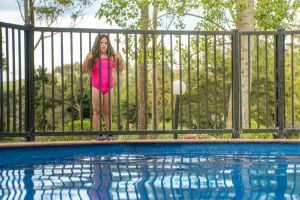Metal
Metal fences are usually made from aluminium, steel or iron. Aluminium fences are generally more affordable and can cost as little as $90 per linear metre, while wrought iron fences can cost $450 to $600 per linear metre.
Metal fences are durable, can be painted any colour and come in a wide variety of designs. They are often easier to install than glass fences and require less maintenance.

